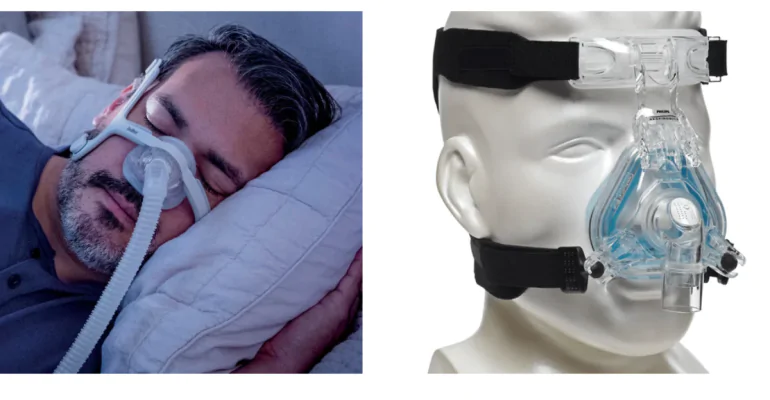Popular posts
Which Direction Is Good For Sleeping?
December 10, 2025Sleep Study Test Cost in India (Location Wise) | 2025
November 29, 2025Best Doctors for Sleep Disorders in Delhi (Somnologist Specialist Guide)
November 21, 2025How does a CPAP machine know when you stop breathing?
December 18, 2024 2024-12-30 17:37How does a CPAP machine know when you stop breathing?

How does a CPAP machine know when you stop breathing?
The CPAP machine is an important tool for curing OSA, which is obstructive sleep apnea.
The CPAP stands for continuous positive air pressure.
The mask keeps the breathing airway open by giving continuous air pressure.
Do you wonder how it knows when you stop breathing? Let’s understand the science behind CPAP devices.
1. What is sleep apnea and what are apneas?
Before understanding the mechanism of a CPAP machine, let us understand what sleep apnea is.
Apnea is a medical condition when you stop breathing temporarily in your sleep for 10 seconds or more.
It can happen because of blockage in the air passage, which is obstructive apnea, or the problem of brain signals, which is central apnea, or a combination of both, which is complex apnea.
The detection and prevention of this condition is called CPAP therapy.
2 Hi-tech sensors in CPAP machines
Latest CPAP machines come with highly advanced and sensitive sensors that can monitor your breathing patterns and identify any disturbance in your breathing.
Airflow sensor: The CPAP machine can measure the flow of air through tubes. It keeps a record of your inhalation and exhalation volumes. When the same volume is absent or reduced, the machine detects sleep apnea.
Air pressure sensor: The machine keeps the positive air pressure through the mask. Any resistance or changes in the pressure indicate air obstruction.
Programs for analysis: The CPAP machines use programs to find out breathing patterns and analyze the difference between normal changes in breath patterns and apnea.
3. How does CPAP detect apnea?
The machine can discover apnea with the change in airflow and pressure.
Obstructive apnea: When the flow of air falls to a certain level, the machines detect it as an obstruction in breathing. The machine adjusts the pressure of air to reopen the air passage.
Central apnea: When your airflow stops without any breathing efforts from the diaphragm or chest. This is considered as the lack of brain signal. The machines, like CPAP, BPAP, or APAP, adjust the air pressure accordingly.
4. What part does automatic adjustment play?
Almost all the CPAP machines are auto-adjusted (APAP). They modify the air pressure in real time to avoid apneas before they happen. If the apnea is found out:
The machine increases the air pressure to open up the air passage.
It then maintains the same pressure throughout to avoid going overboard.
5. How are data and feedback integrated?
Many CPAP machines come with advanced features like:
Sleep Tracker: This feature helps the machine to keep a record of your breathing patterns, snoring, airflow, and apneas.
Mobile apps: Now you can review the data on your smartphones and share it with your doctor.
Apnea alerts: It can ring alarm bells in case of emergencies or send notifications to the caretakers.
6. Difference in apneas?
The CPAP machines can detect the difference between:
Apneas: When you stop breathing completely.
Hypopneas: When your airflow is reduced partially.
Leaks: When the pressurized air is leaking through the mask.
7. Significance of machine setting
For effective CPAP therapy, the machine must be configured thoroughly.
Wrong settings can lead to mistakes in detecting apneas and discomfort to the patient.
Studies of sleep and expert advice can ensure the machine works efficiently for the requirements of the patients.
Conclusion
The CPAP machine is used to cure all types of sleep apneas. It is a highly advanced machine to detect any disturbance in the breathing patterns. The device detected sleep apneas by analyzing the airflow, sensitive sensors, and algorithms.
The machine’s ability to monitor changes in breathing in real time makes it an indispensable tool for patients with sleep disorders. They can easily manage their sleep apneas and improve the quality of their sleep.
Awareness of this technology can enable patients to make the best of CPAP therapy and ensure sound and restful sleep.






